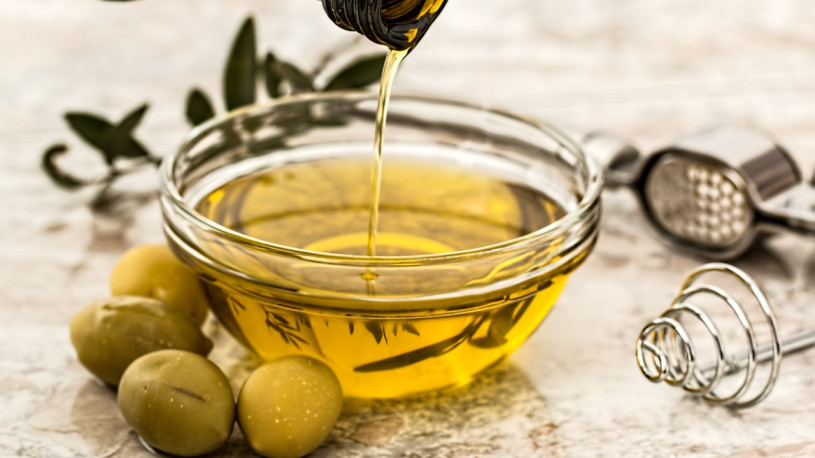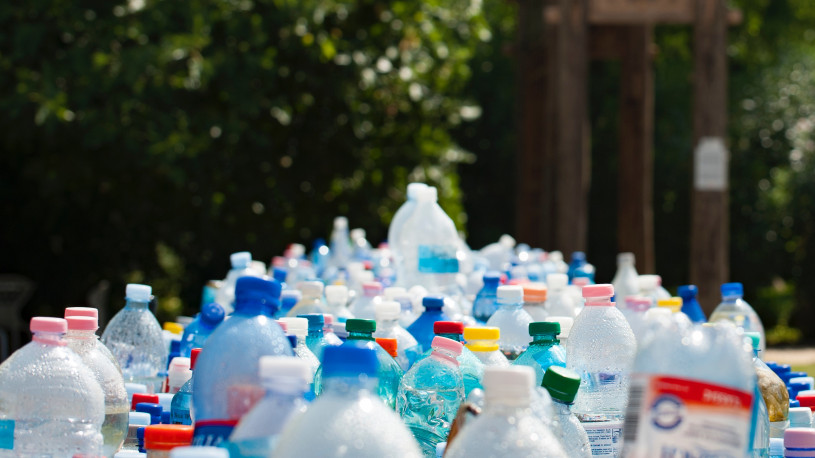-
Will Using Olive Oil Waste Lower Surfactant Prices?
 Continue Reading
Continue ReadingWhilst organic matter has long been known as a useful feedstock for the manufacturing of surfactants, chemists have recently found that olive oil waste may be one of the more effective sources of carbon for future surfactant production.
However, what is perhaps more significant is the team’s discovery in using the olive waste to produce molecules that can be used as building bricks for so many other chemical products. As the online journal Phys.org reports, “[The research team] has produced biosurfactants and monoglycerides, molecules which have innumerable applications in the food and chemical industries.”
Publishing their study in the journal ‘Bioresource Technology’ (found on the website Science Direct) the research team from the University of Granada, Spain and the University of Ulster, Northern Ireland, stated that, “The aim of this work was to demonstrate the effectiveness of hydrolysis pretreatment of olive mill waste before use as a carbon source in biosurfactant production by fermentation. Three hydrolysis methods were assessed: enzymatic hydrolysis, acid pretreatment plus enzymatic hydrolysis, and acid hydrolysis. Fermentation was carried out using two bacterial species: Pseudomonas aeruginosa and Bacillus subtilis.” The study reached the conclusion that, “Our results showed that the enzymatic hydrolysis was the best pretreatment. [As it] proved to effectively increase the productivity of these biosurfactants using olive mill waste as the sole carbon source.”
The ability to use waste organic matter for the development of environmentally safe molecules with such a diverse range of applications is sure to capture the interest of many in the surfactant industry. However, what is key about this research is how it opens the door to more affordable biosurfactants. As the journal Phys.org states, “The findings represent an important breakthrough in obtaining these biosurfactants at lower prices than currently available.” This is due in large part to the fact that the oil waste was converted into monoglycerides and diglycerides using, “enzymatic hydrolysis, which allows for very smooth reaction conditions. This process was carried out in micro-emulsion, a nanostructured system and with an elevated interfacial area, making it possible to maximize the action of the enzymes.”
Given the large amount of waste produced by the olive oil industry, the research may have a significant impact on surfactant markets, if, (and there is always an ‘if’), the process can be scaled up successfully. With the wide range of uses surfactants have, from food chemicals, to cleaners and degreasers, cosmetics and medicine, it is possible that biosurfactants will play a larger, more sustainable part in our lives.
Given ‘smooth reaction conditions’ and plentiful supply of organic feedstock, olive mill waste could easily prove to be industrially and economically viable. If that is the case then surfactant prices are likely to fall, and possibly bringing down the price of olive oil with it.
Photo credit: Pascale Beroujon
-
Are we Witnessing the Dawn of a Bio-Plastics Revolution?
 Continue Reading
Continue ReadingPlastics manufacturers, polymer traders and industry specialists are beginning to sense that the plastics industry is on the brink of a new era. Ever since Bakolite, (or polyoxybenzylmethylenglycolanhydride, as a polymer chemist might call it), was invented in 1907 the plastics industry has seen growth. The number of uses for plastic has expanded almost exponentially such that today’s world is filled with the stuff.
But nowadays, there exists a business climate where ‘sustainable’ is not just a buzz word but a political and economic goal. This is leading many plastic producers, traders and most importantly end-users to head away from fossil fuel-based polymers to an age of bio-plastics. Evidence of this sea change can be seen in the actions of world’s leading companies.
Take for example Lego, the toy brick firm, who from being almost bankrupt in 2003, is now the world’s second largest toy manufacturer (behind Mattel). Not only has the company been able to turn around its business fortunes, they have also been active in lowering the impact their business has on the environment.
Amazingly, Lego bricks have changed little since they were first invented in 1945, as the original few bricks are, as Fast Company reports, “compatible with all the billions of bricks that have followed.” This is because, “Except for a material swap in 1963 to the shiny, hard ABS plastic still used today, the basic bricks have never changed.”
But now that the company is on the route of a third phase of ‘organic growth’, it is taking the time to look at its environmental impact. As a result, the company has begun research into replacing the oil based plastics with bio-plastics.
As Lego spokesperson Kathrine Bisgaard Vase told the online journal Environmental Leader, “Lego bricks are made from the highest quality plastics, which is very functional and durable as a material. However, the current raw materials we use for manufacturing Lego bricks are oil-based, and that is a scarce resource. So we are searching for a new material that is not based on oil.”
While recycled or reclaimed plastic may have been a cheaper option for Lego, the specifics of the bricks and the toy market has ruled this out. As Jennie Lynch, associate at the independent research company, Lux Research, explained, “Challenges associated with identifying the source of recycled materials, as well as concerns about the reuse of hazardous resins such as PVC, could present contamination issues for Lego. In addition, the quality of recycled plastic resin degrades every time it is reused, meaning this is unlikely to meet the durability requirements set by the company for its products.”
But Lego is not alone in looking to use sustainable plastics, as last year IKEA signed an agreement that will see as much as 40% of the plastic in its furniture made from renewable resources.
The cooperating company is the US based firm Newlight, who have created a material which, the journal Biobased World reports, “uses the process of converting air and greenhouse gas into biodegradable plastics, which are proven to out-compete oil-based plastics on price and performance.”
They have achieved this by developing a “biotechnological process to produce their AirCarbon material: a family of high-performance polyhydroxyalkanoate (PHA)-based thermoplastic materials made from carbon emissions.” Which has a “so called ‘secret sauce’ that is a biocatalyst that combines composites of air and methane, and reassembles the carbon, hydrogen and oxygen molecules into a thermoplastic.”
You can learn more about this process on the YouTube video here.
But when it comes to leading companies, the most globally recognised brand in the world is also showing the way when it comes to replacing oil-based plastics. This is because Coca-Cola has developed a bio-plastic bottle.
As Bioplastics Magazine reported, “On June 3rd, 2015 The Coca-Cola Company unveiled the world’s first PET plastic bottle made entirely from plant materials at the World Expo – Milan. PlantBottle™ packaging pushes the boundaries on sustainable innovation by using groundbreaking technology to create a fully recyclable plastic bottle made from renewable plant materials.”
As Nancy Quan, Global Research and Development Officer, The Coca-Cola Company, said, “Our vision was to maximize game-changing technology, using responsibly sourced plant-based materials to create the globe’s first fully recyclable PET plastic bottle made entirely from renewable materials.”
And it is this vision, not from environmental protection groups, not from politicians, not even from the public, but from the heads of industry that will drive the expansion of bio-plastics. Moreover, as companies like Lego, IKEA and Coca-Cola make clear to others that a change is not only possible, but practical (given the removal of fluctuating oil prices and the marketing benefits of a greener product) then it becomes increasingly likely that the flood gates will open on a bio-plastics revolution.
Bio-plastics will no longer be seen as a way to save the planet or improve brand image, but as a natural step in the development of an industry. Much as telecommunications has changed with the development of mobile phone technology, or the construction industry changed with the advent of reinforced concrete, so too will the plastics industry change.
Plastics manufacturers and traders must simply ask themselves where they will be when the alarm clock rings on the dawn of the bio-plastics revolution.
-
A Better Way to Recycle Waste Plastic into Fuel
 Continue Reading
Continue ReadingChemists from the University of California and the Chinese Academy of Sciences have discovered a new chemical process that may save the plastics industry, and might even save the planet. This is because they have found a method for turning plastic (PE) into a fuel that degrades plastic in a ‘milder and more efficient manner’.
Current processes for converting plastic into fuel often use ‘caustic chemicals known as radicals or heating the material to more than 400°C to break down the chemical bonds of the polymers’. However the latest discovery uses a process called ‘cross-alkane metathesis’, which employs chemicals that are readily available by-products from refining and operates at temperatures of only 175°C. This means that mankind may finally be on the brink of industrial scale conversion of plastic waste into fuel. A breakthrough that may lead to cleaner beaches and oceans, improve profit margins for plastics manufacturers and may even lead businesses to mining landfill sites for waste plastic feedstock.
As the research team states in their study, published in the journal Science Advances, “Alkane metathesis is a process in which alkanes are covalently rearranged to give a new distribution of alkane products. Because PE is essentially composed of ultra-long alkanes, we envisioned that alkane metathesis could be used to cleave PE chains. [In this study] we report a mild and efficient degradation of PE into liquid fuels and waxes using inexpensive and readily available light alkanes, such as petroleum ether, as the reagents. These alkanes with low carbon number are major constituents of a variety of refinery and petrochemical streams, the Fischer-Tropsch process, and some biomass conversion pathways. We show that the cross metathesis between these low-value light alkanes and PE results in very efficient degradation of various grades of PE. In particular, we demonstrate that the wastes of commercial PE plastics can be selectively degraded into transportation fuels and waxes under mild conditions in a controllable manner.”
The online journal Phys.org described the process as follows; “The method by the team involves mixing the plastics with an organometallic catalyst, which was made by mixing readily available molecules that were then doped with metal iridium. The reaction caused the bonds holding the plastic together to weaken, allowing them to be more easily torn apart—after doing, so, the team was able to use the broken down material to create a diesel-like fuel which they claim could be used to power vehicles and other motors—they report that burning the fuel is also cleaner than burning other combustible materials.”
However, the team is continuing its study as the process has yet to reach a level of efficiency whereby industrial conversion of plastic to fuel would be financially viable. At present the catalyst in use is recyclable, but with diminished effectiveness. Furthermore, as Phys.org reports, “The ratio of plastic to catalyst is currently approximately 30 to1, which is not nearly good enough for commercial purposes. Their goal is 10,000 to 1. The team is also looking for something to use as part of the catalyst instead of iridium, because it is both difficult to get in large quantities and too expensive.”
Evidently there is still much work to do before cleaning up the plastic from our oceans, beaches and landfill sites becomes profitable, but it is possible that this discovery could be a major turning point in our relationship with plastic. Today, plastic is viewed by many as a single use, fossil fuel product that is nothing more than a necessary evil in the modern world. If the chemical industry were able to convert plastic products at the end of their life into a useable fuel, then the image of plastics manufacturers would be changed forever. Indeed, it may even lead to an enlightened view on what chemical engineering can achieve for the planet.
Photo credit: Jayme Navarro
